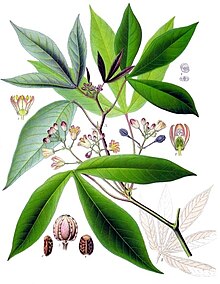This is Dito, he is 19 years old and lives in Safra with his family. He has 7 brothers and sisters.
Esse é o Dito (19 anos). Ele mora na Safra com a sua familia (7 irmãos). Filho dos assentados, ele tambem trabalha nas roças dos outros.
.....PRODUCTION....
 Dito, like many youth in Safra, is hardworking, responsible, and ever-willing to help his family. He works in his family’s fields, and also as an agrarian day-laborer,
in the fields of others (in banana plantations, manioca, onions, melons, and so forth--he knows how to do it all).
Dito, like many youth in Safra, is hardworking, responsible, and ever-willing to help his family. He works in his family’s fields, and also as an agrarian day-laborer,
in the fields of others (in banana plantations, manioca, onions, melons, and so forth--he knows how to do it all).Yanking mandioca = macaxeira = manioc = cassava

Manioc or cassava was
domesticated in Brazil more than 10,000 ago. A high carbohydrate
tuber, it was a staple food for indigenous populations throughout Americas at
the time of colonial conquest. It is a durable plant—and a steady
supply of food even in drought conditions.
In Northeast Brazil, manioc
is a subsistence product and harvest occurs all year long, to meet domestic
demand. Yet, one must have manpower to meet the challenge.
Harvesting this tuber is not easy, as Dito’s photos demonstrate. It
takes a large group of rural workers to yank the sturdy, tall plant from the
roots. This is made even more difficult in hard, dry soil
(especially with weed infestations).
A person can pull up to 600 to 800 kilograms in 8 working hours, and
up to 1,000 if planted in sandy, clean soil. It is best to
harvest when the plants have decreased the number and size of leaves, which
means that there is maximum production of starchy roots.
 Although there are mechanized tools for the
harvest of manioc, it is done manually. First,
harvesters prune branches, 20-30 cm above the ground, and then, uproot the
roots.
Although there are mechanized tools for the
harvest of manioc, it is done manually. First,
harvesters prune branches, 20-30 cm above the ground, and then, uproot the
roots.
After being yanked, the manioc must be packed
into a truck within 24 hours to avoid physiological or bacteriological
deterioration of the plant.
It is packed by baskets, boxes, bags,
ox-carts, and by the labor of man.
PLanting onions

Economically speaking, onions are one of Pernambuco’s most
important crops. They can be produced and harvested year-round, because of the
hot, sunny climate of Northeast Brazil. Once they are planted, they
are ready to be sold domestically, as well as shipped to Southern Brazil, in 90
days.
Just like harvesting mandioca, moving onions is no easy task. It is heavy labor that must be conducted doubled over, under the blazing sertão sunshine.
Clearing the land, tractor work

Dito enjoys driving a tractor--clearing and forming the endless
rows that will be hand-sown with onions, melons, beans, corn--to be consumed in
Pernambuco and in Southern Brazil.
Dito’s family plot
This is Dito's family’s lot in Safra. Dito loved this
photo, and thinks that it looks like it could be a painting, a real work of
art.







No comments:
Post a Comment